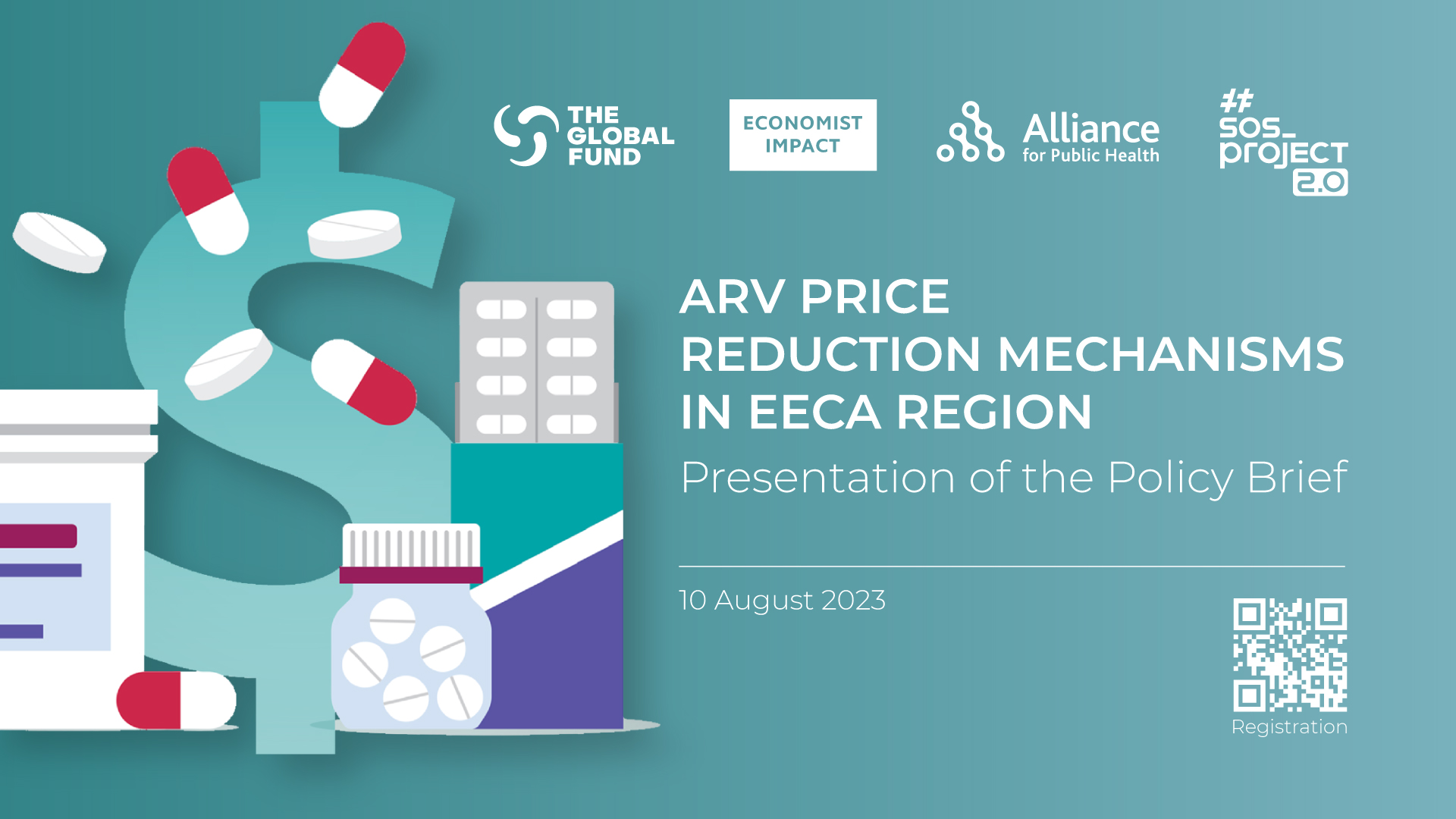On 10 August 2023, from 11:30 to 13:00 (EEST, UTC+3), an online presentation of the policy brief “ARV price reduction mechanisms in Eastern Europe and Central Asia” will be held for the attention of stakeholders from the EECA and SEE regions.
Pre-registration for the event: https://goo.su/Mzc5lN
The region of Eastern Europe and Central Asia (EECA) has one of the fastest-growing HIV rates in the world. New HIV infections and AIDS-related deaths are increasing rather than decreasing. The main HIV treatment and key to controlling the HIV epidemic globally is antiretroviral therapy (ART).
Generic versions of antiretrovirals (ARVs) and support from international donors to procure them mean that they are widely available at a relatively low cost. Despite this, countries in EECA pay more than other global regions for this life-saving treatment. High prices can be attributed partly to government corruption, such as overly complicated procurement processes, limited competition and intellectual property and trade framework restrictions.
Many low- and middle-income countries rely heavily on support from donor funds to procure ARVs and control the HIV epidemic, yet there have been reductions in donor funds across the globe. The event will feature a report by The Economist Impact researchers who have studied pricing and compiled information on the mechanisms of reducing prices for antiretroviral drugs in Eastern Europe and Central Asia into a single guide.
Event agenda
11.30 – 11.35 Welcome, introduction to the webinar
Moderator: Tetiana Deshko, Alliance for Public Health
11.35 – 11.50 Presentation of ARV policy brief on ARV price reduction mechanisms in EECA
Aanisah Khanzada, The Economist
11.50 – 12.05 MPP role in ARV price reduction
Esteban Burrone, Medicines Patent Pool
12.05 – 12.20 ARV price reduction trends: 2019-2021 vs. 2022
Sergii Dmytiiev, HAC
12.20 – 12.35 GF involvement in ARV price reduction in EECA
Ganna Bolokhovets, The Global Fund
12.35 – 12.55 Q&A, discussion
Moderator: Tetiana Deshko, Alliance for Public Health
12.55 – 13.00 Closing remarks
Join us! Pre-registration for the event: https://goo.su/Mzc5lN
This report looks at initiatives and solutions to reduce ART prices in five EECA countries that are experiencing funding changes:
- Improving ART price transparency: National governments must publish procurement documents and pricing information to encourage efficient pricing and avoid corruption.
- Community action: Civil society organisations—often led by people living with HIV—and budget advocacy groups have been central to obtaining affordable ARVs in EECA. Public campaigns, publishing drug prices, opposing patents and negotiating with pharmaceutical manufacturers are among the methods advocated by civil society organisations to achieve affordability.
- National procurement: National procurement agencies have been developed to replace donorfund procurement mechanisms in some countries eg Ukraine. Political will, transparent national laws, generic competition and ongoing advocacy efforts from civil society organisations are required for national agencies to achieve international purchasing power.
- Generic competition: Bringing multiple generics to market is a key strategy to lower the average price per person for ART. Generic competition is partly facilitated by the work of civil society organisations but also through Trade-Related Aspects of Intellectual Property Rights (TRIPS) flexibilities and other provisions in national laws governing registration of medicines and procurement.
- The support of donor funds and international organisations: Despite transitioning away from donor funds to buy ART, the Global Fund, United Nations Development Programme and UNICEF continue to support broader HIV response and provide guidelines to enable a successful transition.
The report is available at economist.com

